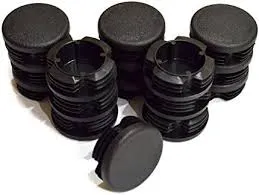Mobile:+86-311-808-126-83
Email:info@ydcastings.com
Italian
Quality Sand Casting Products | Precision Engineering Solutions
The Fascinating World of Sand Casting Products
Sand casting, one of the oldest and most versatile manufacturing processes, has earned its reputation as a staple in the metalworking industry
. This technique employs the use of sand as the primary molding material, allowing for the creation of intricate shapes and components with a wide range of metals, including steel, aluminum, and bronze. As a result, sand casting products can be found in various applications, from automotive parts to artistic sculptures.The process of sand casting begins with the creation of a mold. Initially, a pattern of the desired product is made from a durable material, often wood or metal. This pattern is placed in a flask, which is a container that holds the sand. The sand, combined with a binding agent, is then compacted around the pattern to form a mold. Once the mold is ready, the pattern is removed, leaving a hollow cavity in the shape of the desired product. This cavity is then filled with molten metal, which is poured in through a gating system. After the metal cools and solidifies, the sand mold is broken away to reveal the final product.
One of the key advantages of sand casting is its flexibility. This method is capable of producing large parts and complex shapes that would be challenging or impossible to achieve with other manufacturing techniques. Additionally, the process allows for the integration of various design elements, such as ribs and intricate patterns, without extensive tooling costs. This affordability makes sand casting an attractive option for both small-scale operations and large industrial manufacturers.
sand casting products

Sand casting also stands out due to its ability to accommodate a range of materials. Different types of metal alloys can be used, depending on the required properties of the final product. For example, aluminum sand casting is common due to aluminum’s lightweight and corrosion-resistant properties, making it ideal for automotive and aerospace applications. On the other hand, iron castings are favored in heavy machinery and infrastructure, owing to their strength and durability.
Moreover, sand casting plays a significant role in sustainability. As the process has a long history, many foundries have adopted eco-friendly practices, such as recycling sand. Used sand can be cleaned and reused for new molds, significantly reducing waste. Additionally, the ability to create complex shapes from a single mold minimizes material usage, further contributing to a more sustainable manufacturing process.
Sand casting products encompass a wide range of items across various industries. These include engine blocks, gears, valves, plumbing fittings, and artistic sculptures. Each product showcases the versatility of sand casting and its ability to meet diverse manufacturing needs.
In conclusion, the world of sand casting products is vast and filled with potential. Its unique blend of flexibility, material diversity, and eco-friendly practices makes it a crucial method in modern manufacturing. As industries continue to innovate and seek cost-effective solutions, sand casting will undoubtedly remain a vital player in the production of components that are both functional and aesthetically pleasing. Whether in industrial applications or artistic endeavors, sand casting proves to be a timeless craft that continues to evolve with technology and design.











